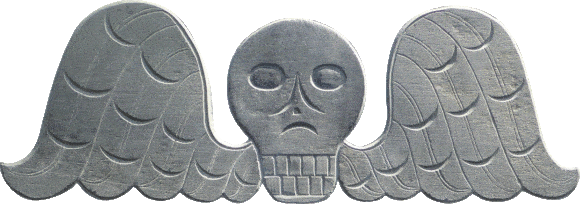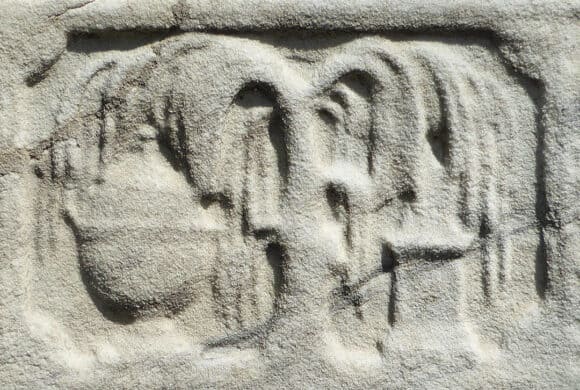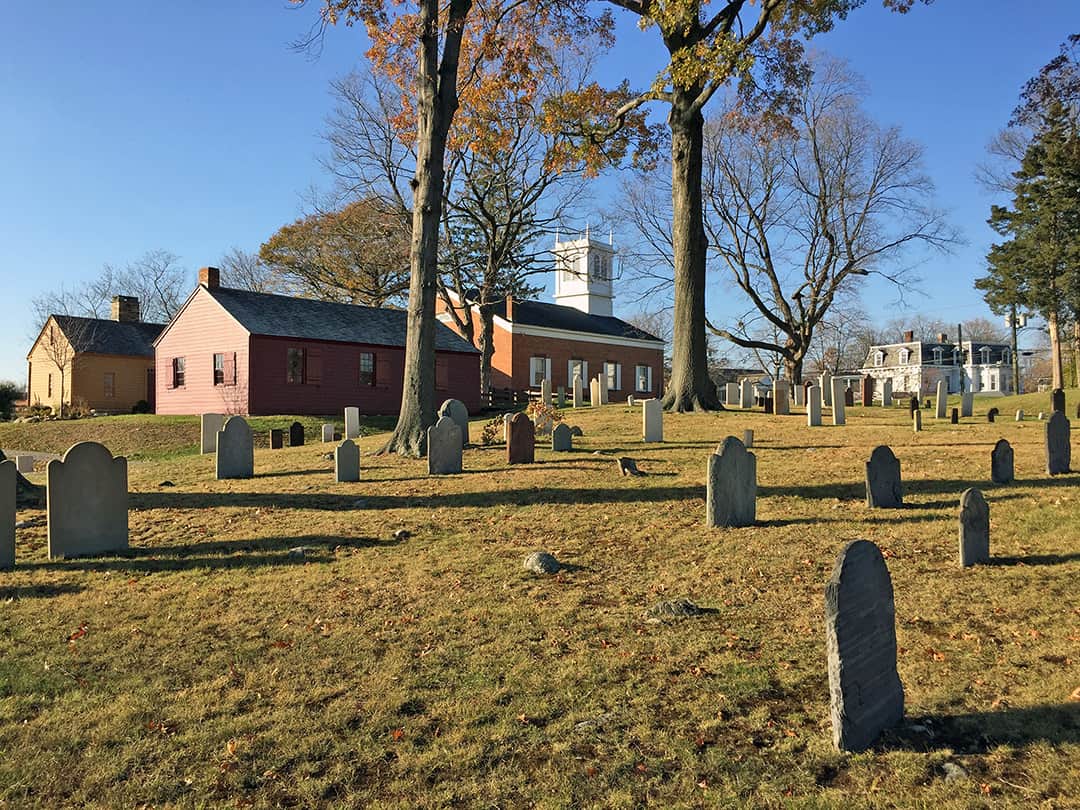Mill Hill Burying Ground
Changing Attitudes About Mortality
The Congregational Church in Norwalk split in 1740: one church relocated to South Norwalk, while the other, the more “conservative” of the two, remained on Norwalk Green. In 1767, what is now known as the Mill Hill burying ground, was tied to this church and its members buried in its extents.
Tombstone design changes during the course of the Colonial Period and can indicate the softening and changing attitudes toward death. Initially, tombstones were used as teaching devices. The Puritans wished to emphasize that life would end soon enough for the living and so depicted this idea by employing decorative elements of skulls and wings. Tombstones also often used phrases which emphasized that only “mortal remains” were present in the grave.



Once life settled and people were no longer struggling to survive in a new land, tombstone design changed.
Rather than being a practical reminder of the inevitabilities of human existence, they began to memorialize loved ones who had passed. While the wings remained, the face of a cherub or angel replaced that of the skull.
By the end of the Colonial Period, the common slate or brownstone grave markers were replaced by white marble tablets, beginning a trend toward demonstrating the status of the dead and his or her family.
The Victorians, ultimately, would expand on this idea through the construction of ever bigger and more monumental tombs.
However, during the late Colonial era, the tombstone became all about memorialization. Skulls, cherubs and wings were replaced by urns situated beneath willow trees, both symbols of everlasting life – and the grief of surviving family and friends.
Revolutionary War Soldiers buried at Mill Hill
Isaac Betts
1760-1827
John Betts
1809
Jesse Bedient
1746-1824
Jabez Gregory
1741-1824
Stephen Hoyt
1762-1827
Jarvis Kellogg
1731-1815
Hezekiah Lockwood
1745-1816
Nathan St. John
1720-1795
Enoch Scribner
1756-1816
Stephen St. John
1732-1801
James Selleck
1732-1809














































